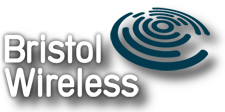Radio course
Course Introduction:
Open Access Radio: Do you have have something to say? Over eight weeks this course will provide a practical introduction to speech based radio as an accessible means of communication. The course will be taught using the Dyne:bolic toolkit – a free GNU/Linux distribution on a CD-Rom that turns any PC with a sound card into a multimedia studio with all the software you need to make and broadcast audio just by putting it in and re-booting the computer. The course is based on the idea that radio is a medium accessible to anyone – not just professionals. If you are a member of a community group, a ‘zine writer, media activist or just someone that wants to be heard then this course will give you the skills and access to the tools you need to produce your own radio program. The course will be participatory student led and everyone attending will have made their own program by the end of the course which will be recorded and then streamed over the internet.
Course Description: The course consists of five units taught over eight weeks and includes time for students to create their own program.
Unit 1: Preparation. Starting with a look at the different kinds of speech based radio – both conventional formats, such as documentary and drama, and some creative alternatives its will aim to help participants decide what they want to make. This unit will also cover planning and research techniques, the purpose and shape of potential programs and what makes for good radio
Unit 2: Gathering Material. This unit looks at how you go about gathering material for a radio program. This will include a look at content such as scripted material, and common techniques like interviews, vox pops and discussions. Practical skills taught in this unit will include microphone techniques and an introduction to sound recording.
Unit 3: Editing. This unit will look at one of the most important practical techniques – sound editing on a PC using both found, and the participant’s own materials with a particular emphasis on speech. For this unit we will be using Rezound – a powerful and intuitive single track audio editor.
Unit 4: Putting it all Together. We will look at how you assemble a radio program from the different elements you have gathered together. It will cover topics such as the use of background music, blending sounds and shaping material. In this unit we will be covering multi-track editing using Audacity to assemble the different parts of a radio program.
Unit 5: Distribution and Broadcasting. This unit looks at the different ways students can use and distribute their material and will look at using Icecast and Publicvoice.fm as a way of setting up your own net radio station – for free. We will also be looking at the difference between live and pre-recorded radio and studio techniques.
